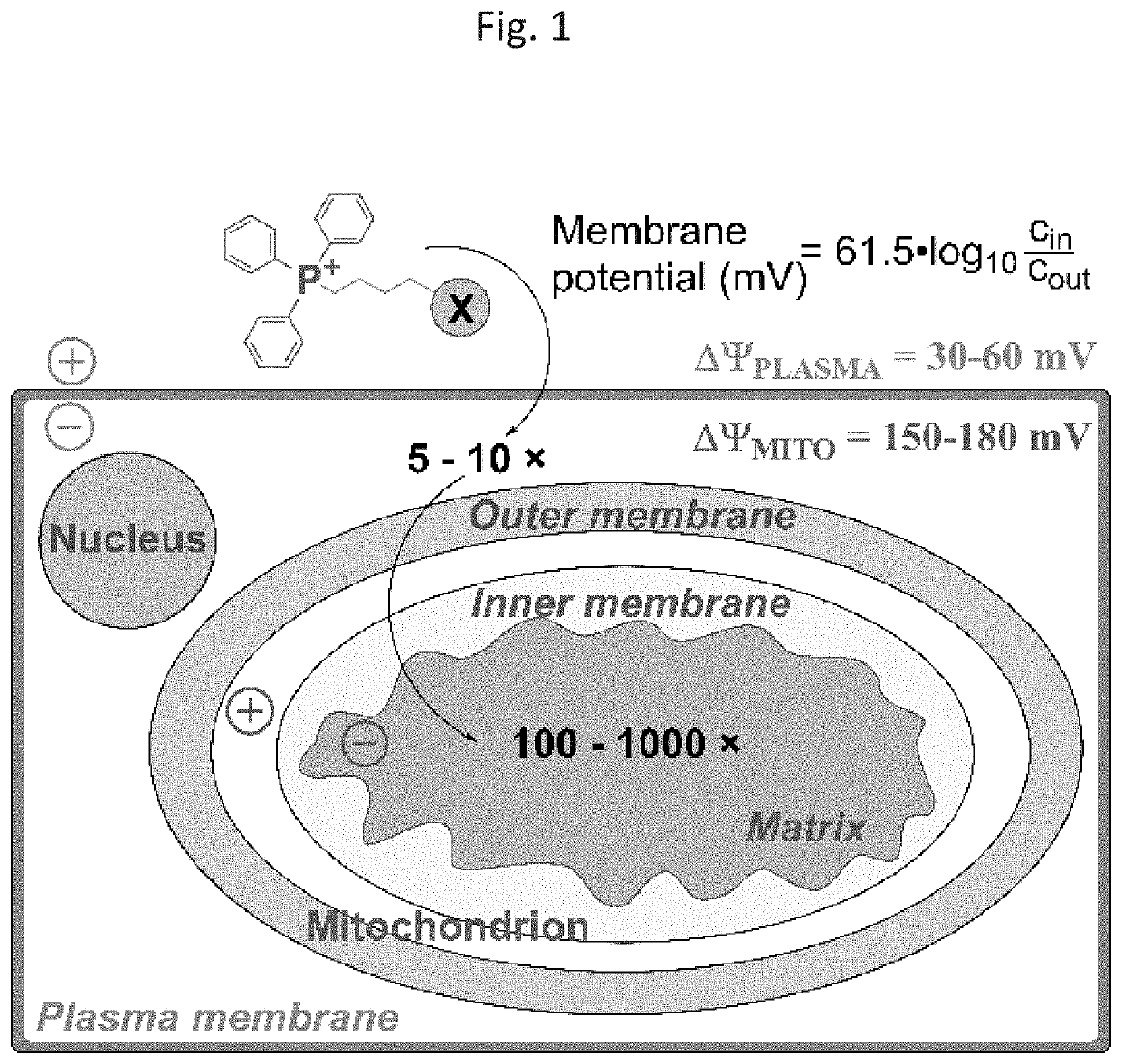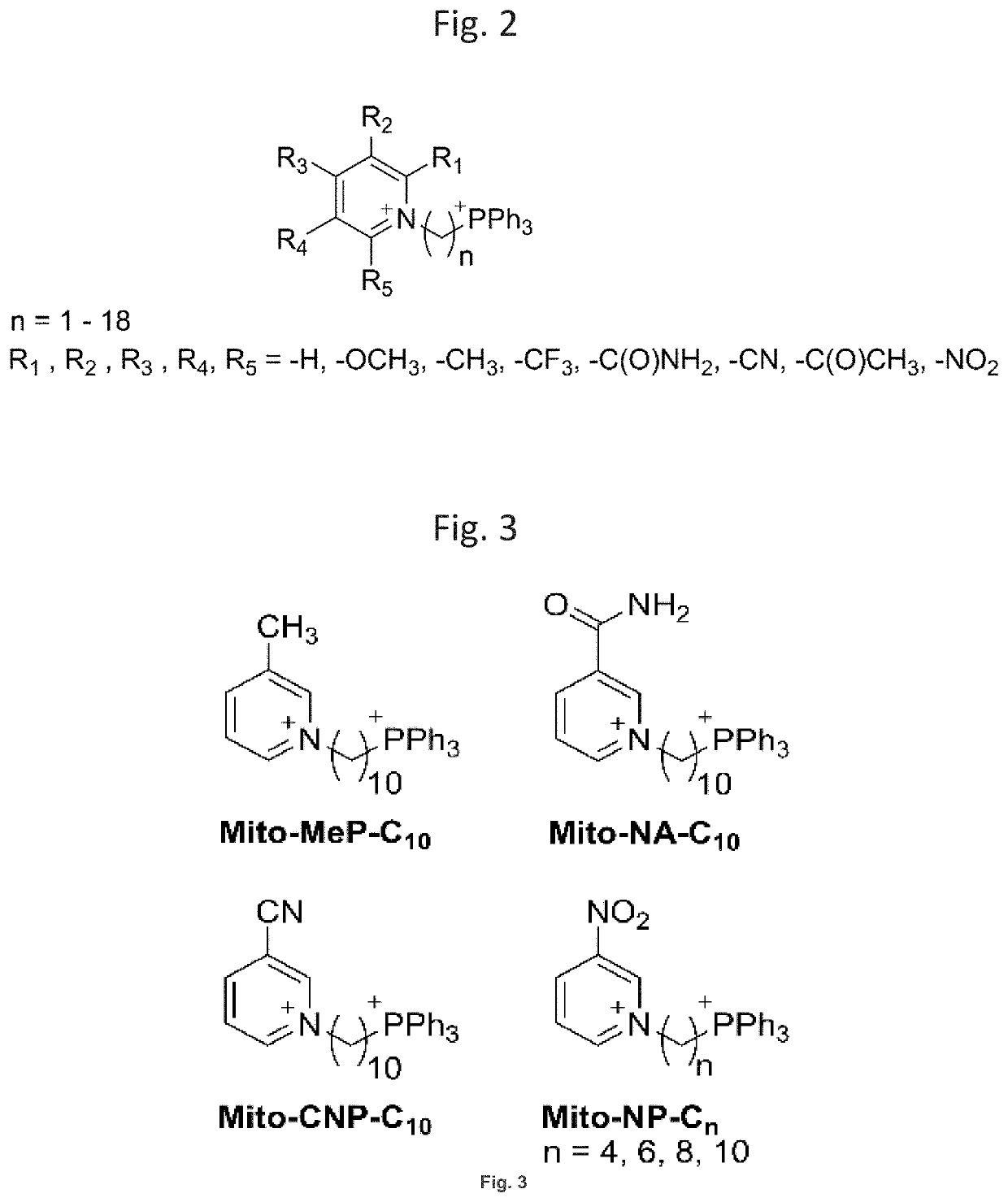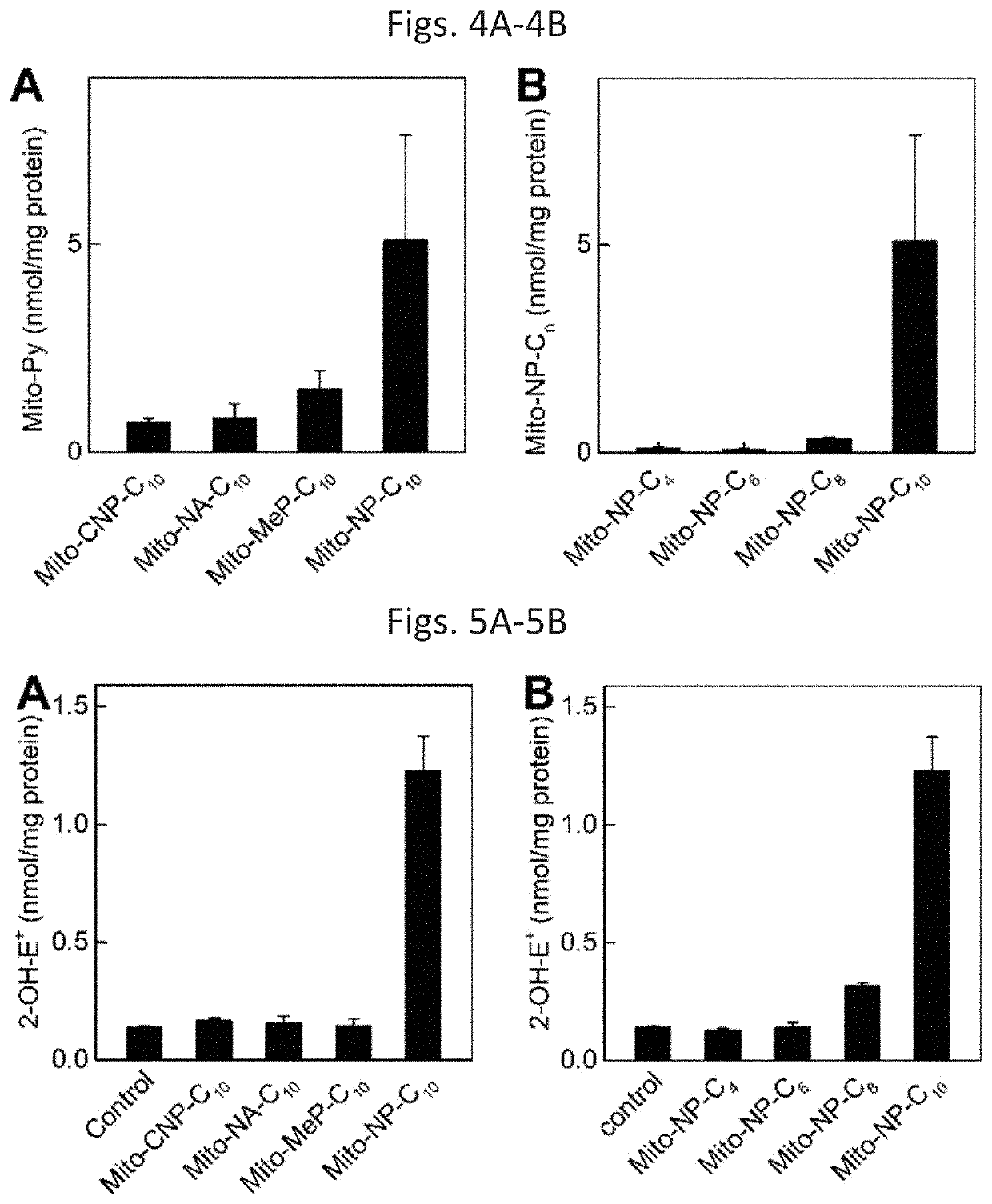Targeting Redox-Active Pyridinium Cations to Mitochondria to Inhibit Proliferation of Drug-Resistant Cancer Cells
- Summary
- Abstract
- Description
- Claims
- Application Information
AI Technical Summary
Benefits of technology
Problems solved by technology
Method used
Image
Examples
example 1
[0079]This Example demonstrates new molecules that can overcome CRC drug resistance. Mitochondria-targeted redox cycling agents are able to inhibit bioenergetic function and stimulate oxidative stress in drug-resistant human colon cancer cells, leading to inhibition of cell proliferation and induction of cell death.
[0080]Despite the reliance of cancer cells on glycolytic metabolism, in many cancer types mitochondria are functional and important for cell survival and proliferation. This led to development of novel anticancer strategies, based on targeting cancer cell mitochondrial function. One of such approach is based on targeting bioactive compounds to mitochondria by conjugation to the triphenylphosphonium cationic moiety (TPP+) using alkyl linkers (FIG. 1).4 It has been shown that TPP+-conjugated compound accumulate selectively in cancer cells in vitro and in tumor tissues in vivo. Several such compounds were shown to inhibit mitochondrial respiration with concomitant stimulatio...
example 2
[0097]1. Antiproliferative and cytotoxic effects in pancreatic cancer cells. We have tested the effect of Mito-NP on human (MiaPaCa2 and Panc1) and mouse (FC1242) pancreatic ductal adenocarcinoma (PDAC) cells and observed concentration-dependent inhibition of the cell growth, with the determined IC50 values of 2.7±0.2, 2.8±0.3, and 3.1±0.1 μM for MiaPaCa2, Panc1, and FC1242 cells, respectively (FIG. 11A). The control compounds lacking the mitochondria-targeting TPP+ moiety, methyl- and decyl-nitropyridinium cations showed lower antiproliferative properties than Mito-NP (FIG. 11B). These observations suggest the unique ability of Mito-NP to accumulate in cancer cells mitochondria, resulting in inhibition of cancer cell proliferation. To determine the cytotoxic potency of Mito-NP, we used Sytox Green fluorescent marker, which accumulates in dead cells and increases its fluorescence yield upon binding DNA. As shown in FIG. 13, Mito-NP dose-dependently induced death of MiaPaCa2 cells. T...
PUM
 Login to View More
Login to View More Abstract
Description
Claims
Application Information
 Login to View More
Login to View More - R&D
- Intellectual Property
- Life Sciences
- Materials
- Tech Scout
- Unparalleled Data Quality
- Higher Quality Content
- 60% Fewer Hallucinations
Browse by: Latest US Patents, China's latest patents, Technical Efficacy Thesaurus, Application Domain, Technology Topic, Popular Technical Reports.
© 2025 PatSnap. All rights reserved.Legal|Privacy policy|Modern Slavery Act Transparency Statement|Sitemap|About US| Contact US: help@patsnap.com



